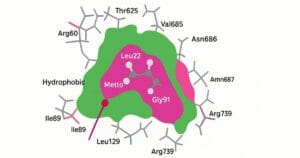
COMPETITIVE EXAM MCQs SERIES of ENVIRONMENTAL SCIENCE for UGC-NET/JRF, SLET, ARS, GATE, and other entrance tests – Statistical Approaches and Modelling in Environmental Sciences: Solid and Hazardous Waste Management: Measurement of Central Tendency and Dispersion.
Syllabus Outline
- Mean (e.g., Arithmetic, Geometric, and Harmonic), applications in average pollution concentration, rainfall, and temperature.
- Median: Use in skewed data such as income distribution, habitat size.
- Mode: Application in categorical and frequency data (e.g., dominant species, land use type).
- Comparison of mean, median and mode for data distribution and outliers.
- Measures of Dispersion
- Range: Simplest measure of spread (e.g., min–max temperature or pollutant level).
- Quartiles and Interquartile Range (IQR): Use for ordinal data and outlier detection.
- Variance and Standard Deviation: Dispersion in quantitative environmental data.
- Coefficient of Variation (CV): Relative measure of dispersion, comparison across datasets.
This quiz contains concept-based, most frequently asked 25 MCQs of “Statistical Approaches and Modelling in Environmental Sciences: Measurement of Central Tendency and Dispersion“. Each question has a single correct/most appropriate answer.
*****
1. Which measure of central tendency is most appropriate when dealing with highly skewed pollution concentration data?
A) Arithmetic mean
B) Median
C) Mode
D) Geometric mean
2. The coefficient of variation is particularly useful in environmental science because it:
A) Measures absolute dispersion only
B) Allows comparison of variability between datasets with different units
C) Is always less than the standard deviation
D) Cannot be used for non-normal distributions
3. Which measure of dispersion is least affected by extreme values in air quality monitoring data?
A) Range
B) Standard deviation
C) Variance
D) Interquartile range
4. The harmonic mean is most appropriately used in environmental science for calculating:
A) Average pollution concentrations
B) Average rates or speeds
C) Central tendency of categorical data
D) Dispersion measures
5. Which statistical measure provides information about the shape of the distribution of environmental data?
A) Standard deviation
B) Variance
C) Skewness
D) Range
6. The geometric mean is preferred over the arithmetic mean when analysing:
A) Temperature variations
B) Bacterial growth rates
C) Linear relationships
D) Additive processes
7. The most appropriate measure of central tendency for ordinal environmental data (like pollution severity levels) is:
A) Arithmetic mean
B) Geometric mean
C) Median
D) Harmonic mean
8. A researcher studying water quality parameters finds that the mean pH is 7.2 with a standard deviation of 0.8. If the data follows a normal distribution, approximately what percentage of observations fall between pH 6.4 and 8.0?
A) 68%
B) 95%
C) 99.7%
D) 50%
9. In environmental impact assessment, when comparing the variability of NOx emissions from two different industrial sources with means of 45 mg/m³ and 120 mg/m³, respectively, which statistical measure would be most appropriate?
A) Standard deviation
B) Variance
C) Coefficient of variation
D) Range
10. For a right-skewed distribution of heavy metal concentrations in soil samples, which statement is most likely true?
A) Mean < Median < Mode
B) Mean > Median > Mode
C) Mean = Median = Mode
D) Mode > Mean > Median
11. An environmental consultant needs to report the “typical” groundwater contamination level from a dataset with several extreme outliers. The most robust measure would be:
A) Arithmetic mean
B) Weighted mean
C) Median
D) Mode
12. The interquartile range (IQR) is calculated as:
A) Q3 – Q1
B) Q2 – Q1
C) Q3 – Q2
D) Maximum – Minimum
13. For environmental data with a mean of 50 mg/L and a median of 35 mg/L, the distribution is:
A) Positively skewed
B) Negatively skewed
C) Perfectly symmetric
D) Bimodal
14. When calculating the geometric mean of bacterial colony counts (2, 8, 32, 128), the result is:
A) 42.5
B) 16
C) 8
D) 10.6
15. In quality control of environmental monitoring, control limits are typically set at:
A) Mean ± 1 standard deviation
B) Mean ± 2 standard deviations
C) Mean ± 3 standard deviations
D) Median ± 1 standard deviation
16. In comparing two environmental datasets, if Dataset A has a higher coefficient of variation than Dataset B, it means:
A) Dataset A has higher absolute variability
B) Dataset A has higher relative variability
C) Dataset A has a higher mean
D) Dataset A has more observations
17. The trimmed mean is calculated by:
A) Removing the highest and lowest values
B) Removing a specified percentage of extreme values from both ends
C) Averaging only the middle 50% of values
D) Weighing values by their frequency
18. For log-normally distributed environmental data, the most appropriate measure of central tendency is:
A) Arithmetic mean of raw data
B) Geometric mean of raw data
C) Median of raw data
D) Mode of raw data
19. The mean absolute deviation is less sensitive to outliers compared to:
A) Median
B) Mode
C) Standard deviation
D) Interquartile range
20. In environmental epidemiology, when exposure data is highly skewed, researchers often:
A) Use the arithmetic mean for analysis
B) Transform data using logarithms
C) Ignore the outliers
D) Use only the mode
21. For environmental monitoring networks, the root mean square (RMS) is particularly useful for:
A) Measuring central tendency
B) Comparing measurement errors
C) Determining sample size
D) Testing normality
22. An environmental scientist is analysing ozone concentrations from multiple monitoring stations. The data shows: Station A (Mean: 85 ppb, CV: 25%), Station B (Mean: 120 ppb, CV: 20%), Station C (Mean: 95 ppb, CV: 30%). Which is correct according to absolute variability?
A) Station C > Station A > Station B
B) Station C > Station B > Station A
C) Station B > Station C > Station A
D) Cannot be determined
23. The concept of “effective sample size” in environmental autocorrelated time series is important because:
A) It determines the true degrees of freedom
B) It measures central tendency
C) It calculates dispersion
D) It eliminates outliers
24. In environmental quality assessment, the weighted mean is most appropriately used when:
I – All measurements have equal importance
II – Measurements have different uncertainties or importance
III – Data is normally distributed
IV – Sample size is large
A) I only
B) II Only
C) II and III
D) II, III and IV
25. The concept of “breakdown point” in robust environmental statistics refers to:
A) The minimum sample size needed
B) The fraction of outliers an estimator can handle
C) The maximum variance allowed
D) The confidence level required
*****
Previous: Attributes and Variables
Next: Skewness and Kurtosis with Statistical Moments
References
- Gupta, S.P. (2020) Statistical Methods, Sultan Chand & Sons, 44th edition.
- Barnett, V. (2004) Environmental Statistics: Methods and Applications, Wiley, 1st edition.
- Manly, B.F.J. (2008) Statistics for Environmental Science and Management, Chapman and Hall/CRC, 2nd edition.

